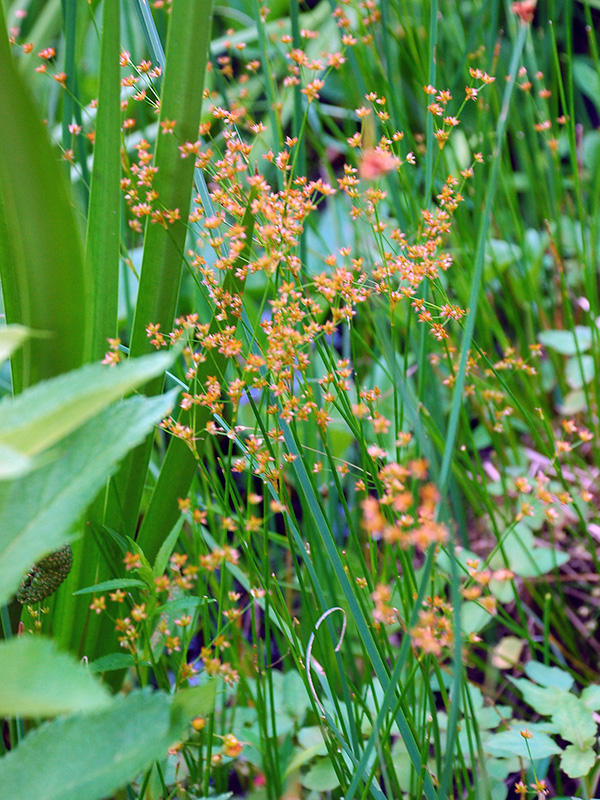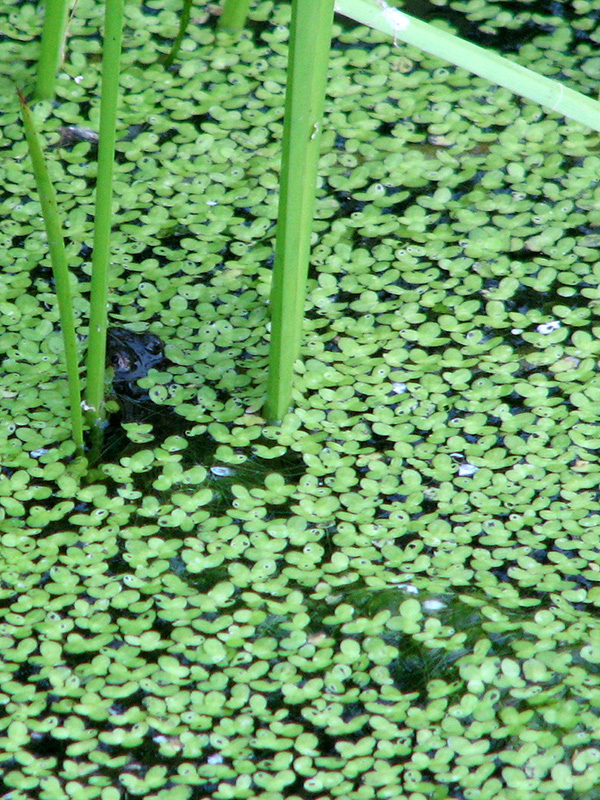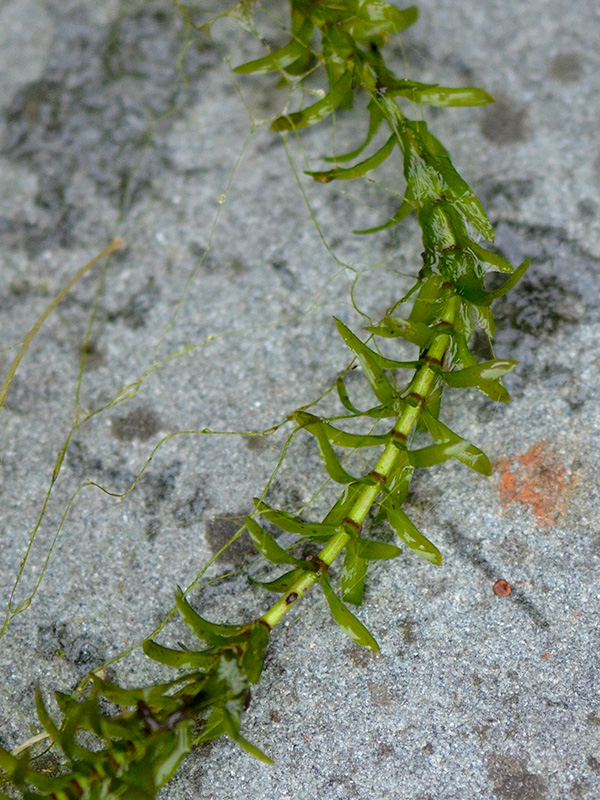Aquatic plants are quite different from other kinds of plants. They definitely lend a different look to the garden.

We’ve tried to use only native plants in our habitat garden, but it isn’t easy to come by this information for aquatic plants. And then the native aquatics can be difficult to find.
Many of the aquatic plants spread — unfortunately into the center of the pond — so we have to keep after them. We’d rather keep the plants at the edge of the pond and eliminate the ones in the center, but of course, it’s harder to get to the ones in the center.
We have some of the four kinds of aquatic plants:
These are the types of aquatic plants we have in our habitat garden.
- Marginal species that grow along the edge of the pond (generally described in the Wildflowers section)
- Floating species rooted in the soil, but whose leaves float on the surface (below)
- Submerged species that live in the water itself, thus receiving less sunlight (below).
- Emergent species that grow up out of the water:
Floating/submerged species:
- Lemna minor – Common duckweed
- Elodea canadensis – Canadian waterweed
Emergents
- MAY NOT BE NATIVE: Acorus calamus – Sweet flag
- Iris versicolor – Blue flag iris
- Juncus effusus – Soft rush
- Menyanthes trifoliata – Bog bean
- Peltandra virginica – Arrow arum
- Pontedera cordata – Pickerelweed
- Sagittaria latifolia – Arrowhead
- Saururus cernuus – Lizard’s tail
- Scirpus americanus – Three-square rush
Our floating species
Common duckweed (Lemna minor)
I never bought this plant intentionally, but I think it came in on other plants I bought. It’s native, but I’d like to get rid of it. In our small pond, the danger is that it would cover the whole surface and deplete oxygen in the water. That’s not likely in our first pond, since it seems to stay out of the stream of flowing water from the waterfall to the skimmer, but it’s just not something I want. It does cover the surface in our second wildlife pond, though, which isn’t desirable. I wish we had never gotten it.

I never bought this plant intentionally, but I think it came in on other plants I bought. It’s native, but I’d like to get rid of it.
In our small pond, the danger is that it would cover the whole surface and deplete oxygen in the water. That’s not likely in our first pond, since it seems to stay out of the stream of flowing water from the waterfall to the skimmer, but it’s just not something I want. It does cover the surface in our second wildlife pond, though, which isn’t desirable. I wish we had never gotten it.
Use Wildlife: Food for tadpoles etc.
Attracts: Birds
Deer Resistant: No
- Learn more:
- Wildflower Center: Common duckweed
- Washington Post: The plant protein that could push meat off your plate
Our submerged species
Canadian waterweed (Elodea canadensis)
At first I thought we must have gotten the non-native, invasive Anacharis densa since it reproduces so agressively, but since the leaves are in whorls of 3, I guess it’s native. I still don’t want it.
We’ve tried to get rid of it or at least keep it under control. It’s been a constant battle ever since we got it (something the Aquascape pond kit had recommended), and I despair of ever ridding ourselves of this nasty plant.

- Learn more:
- Wildflower Center: Canadian waterweed
- Wisconsin DNR: Comparing the native and non-native elodeas
Reflections
Wetland vegetation is more similar across the country than that of other ecosystems. Bodies of water maintain a more constant temperature than the surrounding land, and waterways provide easy transit.
~ Sara Stein, Planting Noah’s Garden
